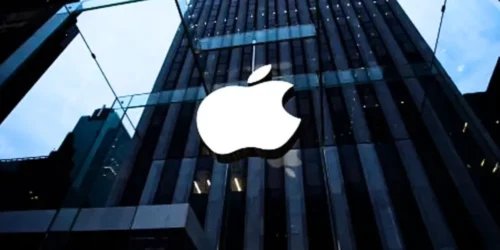It arrives in your life as a whisper, a strange word uttered by a tech-savvy friend or a headline glimpsed on a news ticker. Bitcoin. Then, a cascade of other, even stranger words follows: Blockchain. Ethereum. Dogecoin. NFT. DeFi. To the uninitiated, it sounds like a foreign language, a collection of futuristic jargon and inside jokes.
Cryptocurrency is, perhaps, the ultimate Rorschach test of our time. To some, it is the dawn of a new, decentralized financial order—a noble rebellion against the corrupt and inefficient systems of the old world. To others, it is a colossal, energy-guzzling Ponzi scheme, a digital casino fueled by hype and populated by charlatans. To Wall Street, it is a volatile but potentially lucrative new asset class. To governments, it is a sovereign threat, a tool for criminals, and a maddeningly difficult phenomenon to regulate. They are all, in their way, right.
To truly understand cryptocurrency, you cannot simply define it. You must trace its story. This is a case study of that story—a fifteen-year journey from a single, cryptic whitepaper to a multi-trillion-dollar global phenomenon that has captivated, confused, and polarized the world. We will not offer price predictions or investment advice. Instead, we will dissect the technology, the ideology, and the raw human psychology that propelled this movement. We will explore its brilliant, brittle promise, its spectacular failures, and its profound, world-changing potential.
This is the story of a technology seeking a problem, a tale of digital alchemy, and a story of humanity’s timeless dance with greed and faith. This is the story of how a few hundred lines of code ignited a quiet, and then very loud, financial and cultural revolution.
The Genesis Block – A Ghost, a Crisis, and an Idea That Changed Everything
Every revolution has its creation myth. For cryptocurrency, that myth begins with two things: a global financial cataclysm and a ghost.
The year was 2008. The world’s financial system was in freefall. Institutions that had been pillars of the global economy for a century, like Lehman Brothers, were vaporizing overnight. The crisis was a complex cascade of failures, but at its heart was a crisis of trust. People had trusted banks to be responsible stewards of their money. They had trusted rating agencies to give honest assessments of risk. They had trusted governments to regulate the system. That trust was shattered. Ordinary people saw their savings, their pensions, and their homes disappear, while the very institutions that caused the collapse were bailed out with taxpayer money.
The air was thick with a sense of betrayal. The system felt rigged, opaque, and fundamentally unfair. It was a system that relied on trusted intermediaries—banks, governments, credit card companies—and those intermediaries had failed spectacularly.
It was into this smoldering wreckage of the old financial order that a ghost appeared. On October 31, 2008, a person—or possibly a group of people—using the pseudonym Satoshi Nakamoto published a nine-page white paper to a small cryptography mailing list. The title was unassuming: “Bitcoin: A Peer-to-Peer Electronic Cash System.”
This was not a corporate press release or an academic treatise. It was a quiet, elegant, and profoundly radical document. It was a blueprint for a new kind of money, a system that did not require trust in any central authority. It was a direct response to the failures of 2008.
Satoshi’s genius was not in inventing a single new technology, but in brilliantly combining several existing ones:
- A Public Ledger (The Blockchain): He proposed a decentralized ledger, known as a “blockchain,” that would be shared and maintained by a global network of computers. Every transaction would be a “block” of data, cryptographically linked to the one before it, forming an immutable chain of blocks. This ledger would be public; anyone could view it, but no single person could alter it.
- Digital Signatures (Cryptography): To ensure security, every transaction would be signed using a private key, a secret piece of code known only to the owner of the funds. This proved ownership without revealing one’s identity.
- A Consensus Mechanism (Proof-of-Work): This was the truly revolutionary breakthrough. How do you get a global network of strangers to agree on the state of the ledger without a central boss? Satoshi proposed a system called “Proof-of-Work.” Computers on the network, called “miners,” would compete to solve a complex mathematical puzzle. The first one to solve it would get to add the next block of transactions to the chain and would be rewarded with a certain amount of new bitcoin. This process required immense computational effort (the “work”), making it prohibitively expensive for anyone to cheat the system. It also served as a mechanism for creating new coins predictably and transparently.
Satoshi Nakamoto embedded a message in the very first block of the Bitcoin network, known as the “Genesis Block,” which was mined on January 3, 2009. It was a headline from that day’s edition of The Times of London: “Chancellor on brink of second bailout for banks.” It was a mission statement, a digital protest sign, a declaration of intent. This was not just a technical project; it was an ideological one.
For the first few years, Bitcoin was the exclusive domain of a small tribe of “cypherpunks”—programmers, cryptographers, and libertarians who had long dreamed of creating a private, censorship-resistant digital currency. They were the first miners, running the software on their home computers. They traded bitcoin back and forth for fun, testing the limits of the nascent network. On May 22, 2010, the first-ever real-world transaction occurred: a programmer named Laszlo Hanyecz paid 10,000 Bitcoins for two pizzas. At today’s prices, it would be the most expensive meal in human history, but at the time, it was a landmark moment. The ghost’s idea had crossed the threshold from the digital to the physical world.
Satoshi Nakamoto remained active in the community for about two years, corresponding via email and forums, before vanishing completely in 2011. To this day, his true identity remains one of the greatest mysteries of the 21st century. But his departure was perhaps his final gift to the project. By disappearing, he ensured that Bitcoin could have no central leader, no single point of failure. It was truly decentralized, an idea left to fend for itself in the wild.
The Digital Frontier – Outlaws, Idealists, and the First Great Collapse
As Bitcoin slowly gained traction, it left the cozy confines of the cryptography mailing lists and ventured out into the messy, chaotic world. This was its frontier phase, a digital Wild West populated by a motley crew of true believers, curious speculators, and shadowy opportunists. This era would define cryptocurrency’s early reputation and provide its first painful lessons in risk.
The first major use case for Bitcoin, for better or worse, was one that perfectly showcased its core properties: censorship resistance and pseudonymity. In 2011, a hidden website on the dark web, known as the Silk Road, was launched. It was an anonymous marketplace, an eBay for illegal drugs, accessible only through the Tor network. Its currency of choice? Bitcoin.
The Silk Road was a moral quagmire, but it also served as proof of concept. It demonstrated that Bitcoin worked as a medium of exchange for real (if illicit) goods and services, entirely outside the purview of any government or bank. It was a powerful, if unsettling, demonstration of what “permissionless” finance meant. When the FBI finally shut down the Silk Road in 2013 and seized its assets, it ironically became one of the world’s largest holders of bitcoin, lending a surreal sense of legitimacy to the very currency it was trying to stamp out.
While the outlaws were testing their limits on the dark web, the idealists and speculators were building the first pieces of infrastructure on the regular internet. The most important of these were the cryptocurrency exchanges. These were the digital trading posts where people could exchange their regular, government-issued (“fiat”) currency for bitcoin. The largest and most infamous of these was a Tokyo-based exchange called Mt. Gox.
Mt. Gox (the name originally stood for “Magic: The Gathering Online eXchange”) began as a side project and grew to handle over 70% of all Bitcoin transactions at its peak. It was the center of the nascent crypto universe. But it was also a ticking time bomb. Amateurs ran the exchange, its code was a mess, and its security was tragically lax.
In early 2014, the bomb went off. Mt. Gox abruptly halted all withdrawals and then went offline completely. A few weeks later, it filed for bankruptcy, announcing that it had “lost” 850,000 bitcoin—worth about $450 million at the time—belonging to its customers. Hackers had slowly siphoned off the coins over several years due to the exchange’s abysmal security.
The Mt. Gox collapse was crypto’s first great cataclysm. It was a brutal lesson in one of the space’s core tenets: “Not your keys, not your coins.” When users left their bitcoin on an exchange, they were trusting a third party, the very thing Bitcoin was designed to avoid. The collapse sent the price of bitcoin plummeting by over 80% and ushered in the first “crypto winter,” a long period of depressed prices and public ridicule. To the mainstream media, the story was simple: the weird internet money used by drug dealers had imploded. The experiment, many declared, was over.
But they were wrong. While the speculators and fair-weather fans fled, the core community of developers and true believers continued to build. They viewed the Mt. Gox failure not as a failure of Bitcoin itself, but as a failure of a centralized and untrustworthy company. The protocol had worked perfectly; the human layer built on top of it had failed. The survivors of this first crypto winter were hardened, and they were about to witness an evolutionary leap that would render the world of Bitcoin a relic of ancient history.
The Great Proliferation – Ethereum and the Cambrian Explosion of Everything
For its first five years, the story of crypto was the story of Bitcoin. However, in 2014, a 19-year-old Russian-Canadian programmer named Vitalik Buterin published a white paper that would change everything. Vitalik, a brilliant and respected member of the Bitcoin community, saw a limitation in Satoshi’s design. Bitcoin was like a calculator—it was designed to do one thing (transfer value) and do it exceptionally well. Vitalik envisioned something more. He envisioned a computer.
His brainchild was Ethereum. Ethereum took the core concept of a decentralized blockchain and added a revolutionary new layer: smart contracts.
A smart contract is not a legal document; it is a piece of code that lives on the blockchain. It’s essentially an “if-then” statement that can execute automatically, without a human intermediary, when certain conditions are met. Think of it like a trustworthy vending machine. You put in a dollar (the “if”), and the machine automatically gives you a can of soda (the “then”). There’s no need to trust a cashier. A smart contract extends this logic to virtually any type of agreement, including financial derivatives, insurance policies, voting systems, property registries, and more.
Ethereum was not just a new currency; it was a decentralized world computer. It allowed developers to build “decentralized applications” (dApps) on top of its blockchain. This single innovation triggered a Cambrian explosion of creativity and speculation, expanding the crypto universe far beyond the simple idea of peer-to-peer cash.
The ICO Mania (2017)
The first major wave was the Initial Coin Offering (ICO) boom. An ICO was a new, unregulated form of fundraising. A startup could write a whitepaper outlining an idea, create a new “token” on the Ethereum blockchain, and sell it to the public for ether (Ethereum’s native currency) or bitcoin.
The result was pure pandemonium. For about 18 months, the ICO market was a frenzy of speculation. Billions of dollars have poured into projects, many with little more than a slick website and a vague, jargon-filled white paper. It was the dot-com bubble on steroids. While a few legitimate projects were born from this era, the vast majority were either outright scams or well-intentioned but hopelessly flawed ideas that quickly faded into obscurity. The 2017 ICO bubble eventually burst spectacularly, leading to another crypto winter, but it proved that there was a massive global appetite for funding new, decentralized projects.
The Rise of DeFi (Decentralized Finance)
After the ICO crash, the builders who remained focused on a more powerful and enduring idea were those who sought to recreate the entire financial system on the blockchain. This became known as DeFi.
DeFi applications are like financial Lego blocks. They are open-source, interoperable smart contracts that enable users to lend, borrow, trade, and earn interest on their cryptocurrency assets, all without the need for a bank or traditional financial intermediary.
- Decentralized Exchanges (DEXs), such as Uniswap, enable users to trade tokens directly from their wallets.
- Lending Protocols like Aave and Compound allow users to deposit their crypto as collateral and borrow against it, or lend it out to earn a yield.
- Stablecoins like USDC and Dai are tokens designed to be pegged to the value of a stable asset, such as the U.S. dollar, providing a less volatile medium of exchange within the DeFi ecosystem.
DeFi represented a maturation of the space, a move from speculative fundraising to building real, functional financial plumbing.
The NFT Explosion (2021)
The most recent, and perhaps most culturally significant, wave was the rise of Non-Fungible Tokens (NFTs). If a bitcoin is “fungible” (one bitcoin is identical to any other bitcoin), an NFT is a unique, one-of-a-kind token. It serves as a digital certificate of ownership, a verifiable deed for a specific digital asset (such as a piece of art, a collectible, or a piece of music) recorded on a blockchain.
The NFT boom of 2021 brought crypto crashing into the mainstream worlds of art, music, and gaming. When a digital artist known as Beeple sold an NFT of his work for $69 million at a Christie’s auction, the world took notice. Projects like CryptoPunks and Bored Ape Yacht Club became digital status symbols, selling for millions and attracting celebrity collectors.
To critics, NFTs were a bizarre bubble, a way to sell digital “receipts” for easily copied JPEGs. To proponents, they represented a revolutionary breakthrough in digital property rights, enabling creators to monetize their work directly and for users to own their digital assets with true ownership.
This great proliferation—from ICOs to DeFi to NFTs—transformed cryptocurrency from a single asset into a sprawling, multi-chain ecosystem of interconnected applications and communities. It was a period of breathtaking innovation and unbridled chaos. And it set the stage for the biggest booms and most spectacular busts the financial world had ever seen.
The Casino and the Cathedral – The Psychology of Mania and Collapse
With the proliferation of new tokens and applications came a massive influx of new people. Crypto was no longer the domain of a few thousand cypherpunks. It had now become a global phenomenon, attracting everyone from Wall Street hedge funds to retail investors who gambled their stimulus checks on meme coins. This influx of capital and attention created a powerful, cyclical pattern of euphoric manias followed by devastating collapses.
The bull runs of 2017 and 2021 were masterclasses in human psychology. A potent cocktail of factors fueled them:
- Easy Money: Years of low interest rates and quantitative easing by central banks had flooded the global economy with cheap money, all of it looking for a return. Crypto, with its promise of astronomical gains, was an irresistible magnet.
- FOMO (Fear Of Missing Out): As prices began to rise, stories of overnight crypto millionaires saturated the media. Friends, family, and social media influencers all seemed to be getting rich. The psychological pressure to get in on the action became immense.
- The Narrative Engine: Every bull run needs a story. In 2017, it was the story of “digital gold” and the ICO revolution. In 2021, it was the story of DeFi, NFTs, and institutional adoption. These narratives gave a veneer of intellectual justification to what was, for many, a purely speculative frenzy.
- The Celebrity Amplifier: The 2021 bull run was supercharged by celebrity endorsements. Everyone from Matt Damon and Tom Brady to Paris Hilton and Snoop Dogg promoted cryptocurrencies and exchanges, lending an aura of mainstream credibility and luring in a new wave of retail investors. Coins like Dogecoin, which started as a joke, soared to billion-dollar valuations based on little more than tweets from Elon Musk.
During these manias, the crypto space felt like a massive, global casino. But at the same time, another group of people, the true believers, saw it as a cathedral under construction. While the gamblers were betting on short-term price movements, the builders were quietly laying the foundations for a new financial and digital infrastructure. This duality—the Casino and the Cathedral—is essential to understanding the space.
Of course, what goes up must come down. The crashes that followed these manias were as brutal as the ascents were euphoric. And they exposed the deep, systemic risks that the rising prices had papered over. The collapse of 2022 was particularly devastating, not just a market downturn but a crisis of trust caused by the implosion of two of the space’s biggest players.
The Fall of Terra/Luna
Terra was a so-called “algorithmic stablecoin” project. Its stablecoin, UST, was not backed by real dollars, but by a complex algorithm and a sister token called Luna. The creators promised it would always be worth $1. In May 2022, the algorithm broke under market pressure. In a matter of days, the entire $40 billion ecosystem collapsed to zero, wiping out the life savings of countless investors who had believed in its “stable” promise. It was a demonstration of the immense danger of building financial systems on unproven, hyper-complex code.
The Implosion of FTX
If Terra was a failure of technology, FTX was a failure of basic human honesty. FTX was one of the largest and most respected exchanges in the world. Its founder, Sam Bankman-Fried (SBF), was portrayed as the responsible, grown-up face of crypto, a nerdy wunderkind who hobnobbed with politicians and celebrities. In November 2022, it was revealed that SBF had been secretly funneling billions of dollars of customer funds from FTX to his personal trading firm, Alameda Research, to cover its massive gambling losses. It was an old-fashioned fraud, dressed up in the complex language of crypto. FTX, once valued at $32 billion, declared bankruptcy overnight.
The one-two punch of Terra and FTX was crypto’s “Lehman Brothers moment.” It shattered the narrative of institutional adoption and exposed the rot of greed, recklessness, and outright criminality that had festered during the bull market. The Casino had burned down, taking billions of dollars with it. The question for the survivors was whether the Cathedral was still standing.
The Reckoning and the Great Rewiring – Facing the Uncomfortable Truths
The brutal winter of 2022 forced a period of sober reflection upon the entire cryptocurrency industry. The hype had evaporated, the tourists had fled, and only the builders and the most ardent believers remained. This period of reckoning has compelled the community to confront its most daunting challenges and, paradoxically, set the stage for its most significant evolutionary leap yet.
The Scalability Trilemma
This is the core engineering challenge of blockchain technology. You can have three desirable properties: decentralization, security, and scalability (the ability to process a large number of transactions quickly and cheaply). The trilemma states that you can only pick two. Bitcoin prioritizes security and decentralization, which is why it is slow and expensive to use for small transactions. Many newer blockchains chase scalability but often sacrifice decentralization, making them more vulnerable to control or attack. Solving this trilemma is the holy grail of blockchain development.
The Energy Debate
The Proof-of-Work system used by Bitcoin consumes a vast amount of energy, comparable to that of a small country. While proponents argue that much of this energy is from renewable or otherwise stranded sources, the environmental impact is a major public relations and ethical hurdle. This has led to a push for alternative consensus mechanisms, most notably “Proof-of-Stake,” which Ethereum successfully transitioned to in 2022. Proof-of-Stake secures the network using economic collateral instead of computational power, resulting in a reduction of over 99% in energy consumption.
The User Experience Nightmare
For all its revolutionary potential, using crypto remains incredibly difficult and risky for the average person. Managing private keys, navigating different blockchains, and avoiding sophisticated scams requires a level of technical expertise that is a massive barrier to mass adoption.
The Great Rewiring: Institutionalization and the Search for a Purpose
Just as the industry was grappling with these existential challenges, an unexpected force arrived to change the narrative once again: Wall Street. After years of skepticism, the titans of traditional finance began to move in, not as tourists, but as builders of new infrastructure.
The most significant event was the approval of spot Bitcoin ETFs (Exchange-Traded Funds) in the United States in early 2024. This was a landmark moment. For the first time, ordinary investors could get exposure to bitcoin through their regular brokerage accounts, with giants like BlackRock, Fidelity, and Franklin Templeton acting as custodians. It was the ultimate bridge between the old financial world and the new.
This institutional embrace has fundamentally rewired the space.
- It provides a new level of legitimacy and a massive new channel for capital to flow into the ecosystem.
- It bifurcates the market. Bitcoin is increasingly being treated as a pure store of value, a “digital gold,” a macro asset to be held in institutional portfolios. Meanwhile, platforms like Ethereum are competing to be the foundational layer for a new, decentralized internet (Web3).
- It forces a regulatory reckoning. With mainstream financial players now deeply involved, governments can no longer treat crypto as a fringe issue. A comprehensive regulatory framework, once feared by crypto purists, is now seen by many as a necessary step for maturation and long-term growth.
Conclusion: An Unfinished Revolution
So, what is cryptocurrency? After fifteen years of breathless hype, spectacular crashes, and world-changing innovation, the answer remains complex. Cryptocurrency is a technology—a new type of database that allows for the creation of digital scarcity and the transfer of value without intermediaries. It is an ideology—a libertarian, cypherpunk vision of a world with greater financial freedom, privacy, and individual sovereignty. It is a global, multi-trillion-dollar asset class—a digital casino for some, a long-term inflation hedge for others, and a source of venture-style returns for the brave. And it is a social and cultural movement—a collection of digital tribes, communities, and builders who believe they are constructing the next iteration of the internet and the financial system.
The case of cryptocurrency is the case of an unfinished revolution. It has produced solutions, like a global, censorship-resistant store of value in Bitcoin. However, it is still desperately searching for problems that it is uniquely suited to solve for the average person. The journey has been chaotic, wasteful, and often infuriating. It has been marred by fraud, greed, and a level of speculative mania that makes the dot-com bubble look tame.
And yet, it persists. It survives every crash, every scandal, every declaration of its demise. It survives because the core idea born in the ashes of the 2008 crisis—the idea of a trustless, decentralized, and open financial system—remains profoundly compelling. The challenges are immense. The questions of regulation, scalability, and societal impact are far from answered. But the ghost of Satoshi Nakamoto unleashed an idea so powerful that it can no longer be contained. We are all, whether we know it or not, living in the world that Bitcoin built. And the great, tumultuous, and transformative rewiring has only just begun.













